The Wonders of Weeki Wachee
 As I have previously mentioned, the Atlas is incredibly lucky to have a team of excellent writers, editors, and generally brilliant folks involved. (If you want to know more check the new and improved about page, now featuring tiny pictures!)
As I have previously mentioned, the Atlas is incredibly lucky to have a team of excellent writers, editors, and generally brilliant folks involved. (If you want to know more check the new and improved about page, now featuring tiny pictures!)
I would like to introduce you to one of these aforementioned generally brilliant folk.
Anhie Nguyen lives in Los Angeles, CA, where she spends her free time exploring internet art, pseudoscience and unusual architecture. Though Ho Chi Minh City, Vietnam and Ghent, Belgium are among her favorite cities, she insists that her home state of Florida is the most bizarre place she’s ever experienced. She is a fantastic writer, and is today bringing us a little piece of that Florida weirdness in the form of the Weeki Wachee mermaids! I give you: Anhie Nguyen - DT
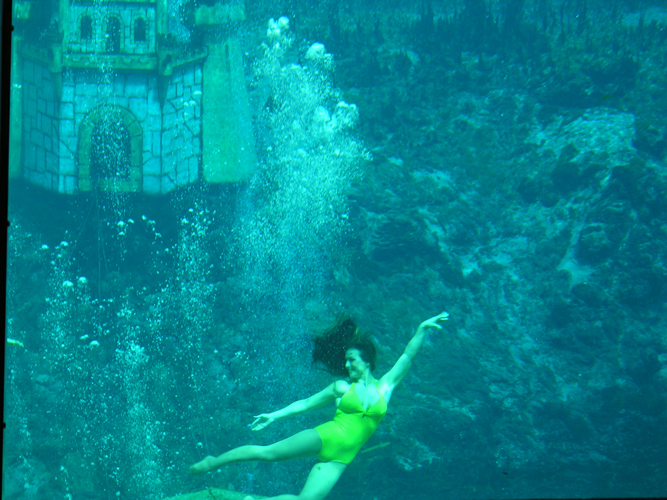
With a population of only 12 people, it seems fitting that the city of Weeki Wachee, Florida earns its name from a Seminole phrase that means “little spring.” But little did the Seminoles know that Weeki Wachee Springs would become, well, a really big deal. As home to the world’s only “live mermaid show,” and the site of North America’s deepest naturally-formed spring, the tiny town of Weeki Wachee has played a large role in shaping Florida’s wild and wondrous history.

Since 1947, the “City of Live Mermaids” has attracted millions of visitors with its subterranean aquifers, siren songs and synchronized swimming performances. The beloved tourist attraction was created by Newton Perry, a former Navy frogman and Tarzan stunt double. At the time, the desolate area was surrounded by nothing but alligators and bears (oh my!), and the spring was filled with abandoned cars and refrigerators. Perry cleaned up the area and, using an air compressor and a simple rubber hose, created an underwater breathing apparatus that would soon bring his mermaid dreams to life.
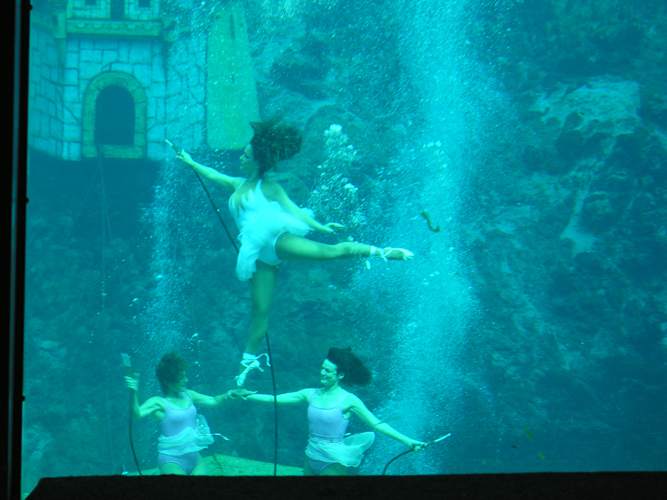 ]
]
Perry’s free-flowing air tubes allowed swimmers to move underwater without any restraint, unlike oxygen tanks which had to be strapped to one’s back. This freedom of movement gave the illusion that performers were “breathing” underwater, thus appearing as mermaids. Using this hose-breathing technique, Perry then trained a handful of young women to perform underwater tricks, such as pirouettes, somersaults, or even how to play football. For a stage, Perry cut out one side of the spring and replaced it with an 18-seat underwater glass theater.
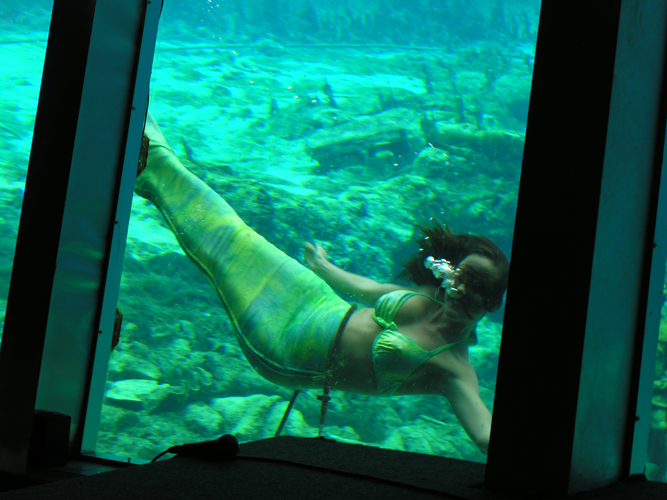
On October 13, 1947, Weeki Wachee Springs had its first mermaid show. During these variety shows, the young ladies donned glittering mermaid costumes and, 16 feet beneath the spring’s surface, astounded audiences by performing dance routines, guzzling sodas and eating sandwiches. By the 1960s, Weeki Wachee became such a popular roadside attraction that the American Broadcast Company (ABC) purchased the park and built a 500-seat theater, which is still used to this day.
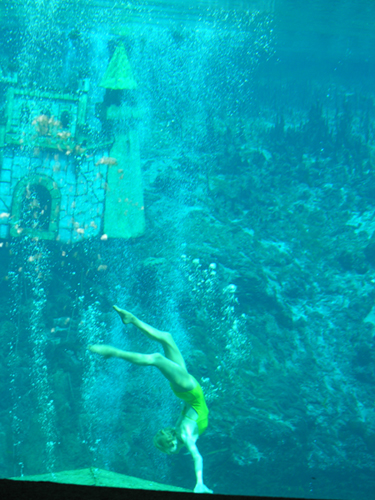

As luck should have it, my first visit to Weeki Wachee fell on the weekend of its 60th anniversary, when mermaid alumni from all over the world reunited for a spectacular performance. Like most of their other shows, the mermaids performed underwater renditions of The Little Mermaid, Beauty and the Beast and Peter Pan.

They even had a number of surprise visitors, like this turtle (see below):

Though the spring provides an enchanting backdrop, its natural elements present a harsh reality. A huge network of underground aquifers pump out 170 million gallons of freshwater a day, creating a current so strong that it has prevented researchers from determining the full depth of the spring. It wasn’t until a drought in 2007 when a team of divers were able to descend 407 feet below the surface, discovering a multitude of geological wonders.
Between multiple dives, the researchers explored roughly 6,700 feet of subterranean cave systems, consisting of stalactites and house-sized boulders. The passageways connecting the caves are so large that researchers have equated them to the size of the Lincoln tunnel. Moreover, the pressure at that depth of the spring is so overwhelming that a diver’s 2-hour long exploration requires 8 hours of decompression time!

The mermaids have their own battles with the depths and pressures involved in being a mermaid at Weeki Wachee. Some of the mermaids are able to hold their breath for 4 minutes, diving down to an impressive depth of 116 feet!Though the mermaids usually perform at only 16-20 feet below the spring’s surface, they must still battle a steady current of 5 miles per hour. As such, sinus pressure problems and nose bleeds are common for many performers, and some even experience partial hearing loss.
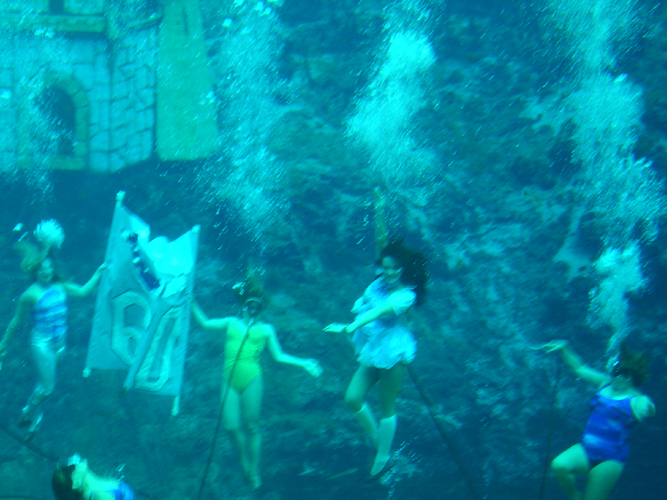
Nevertheless, it was clear from the 60th anniversary show that Weeki Wachee pride is something that runs deep in mermaid’s hearts. Indeed, there is a unique sense of camaraderie between old and young mermaids alike; a bond that was evident in their touching reunion performance and, oddly enough, the subject of a Supergrass music video, “Low C:”
Today, Weeki Wachee Springs is Florida’s oldest roadside attraction and also it’s newest state park. In a place most known for its corporate theme parks, it’s refreshing to see an attraction like Weeki Wachee still retain Florida’s old fantasy and charm.




Follow us on Twitter to get the latest on the world's hidden wonders.
Like us on Facebook to get the latest on the world's hidden wonders.
Follow us on Twitter Like us on Facebook